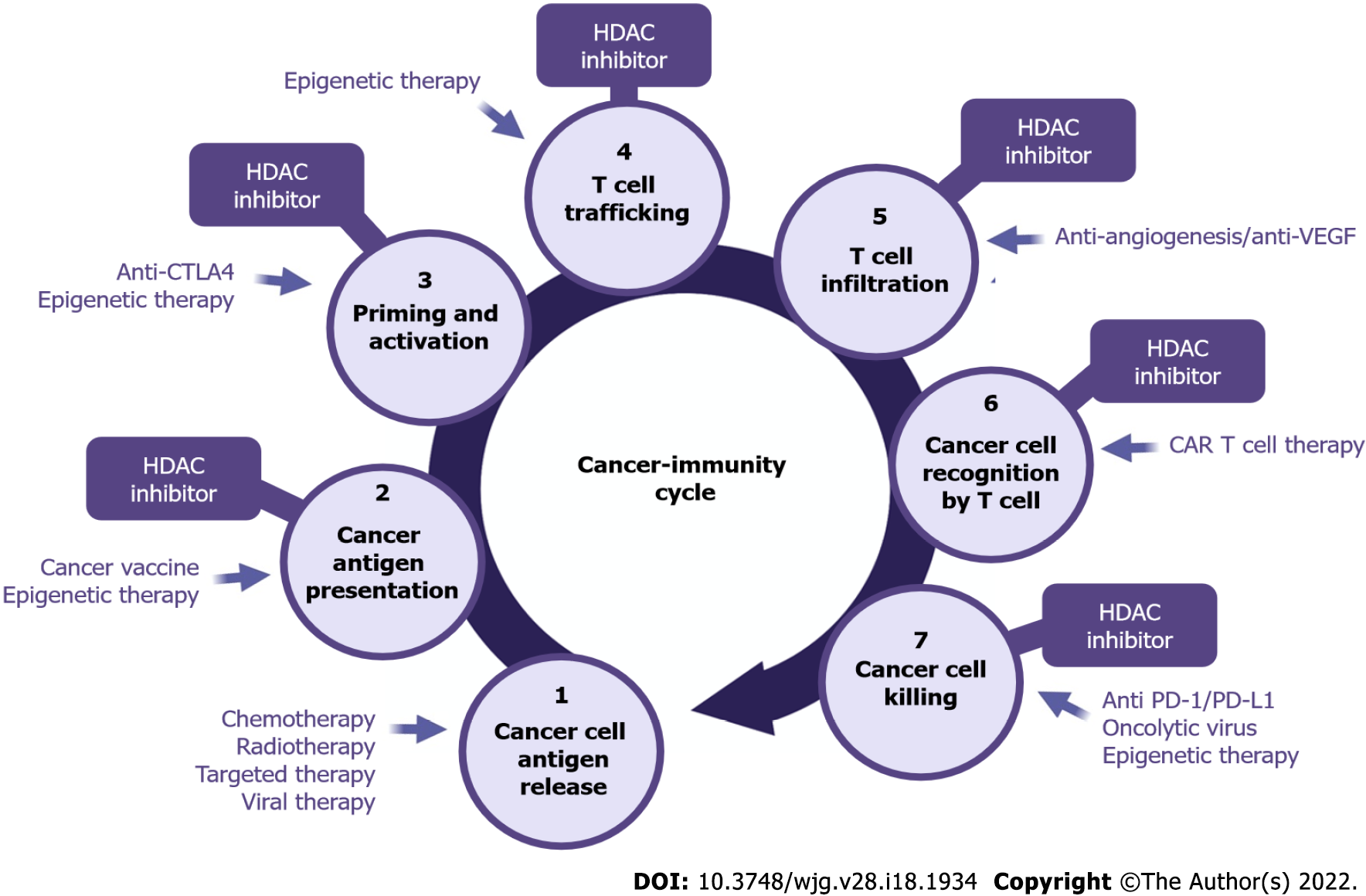Copyright
©The Author(s) 2022.
World J Gastroenterol. May 14, 2022; 28(18): 1934-1945
Published online May 14, 2022. doi: 10.3748/wjg.v28.i18.1934
Published online May 14, 2022. doi: 10.3748/wjg.v28.i18.1934
Figure 3 Role of histone deacetylases inhibitors in targeting cancer immune evasion.
Cancer–immunity cycle is a continuously cyclical process to amplify the immune response leading to cancer eradication. The cancer–immunity cycle has seven steps: Step 1: Dying cancer cells release neoantigen (Step 2). These neoantigens are captured by antigen-presenting cells and present the antigens on the major histocompatibility complex to T cells (Step 3), allowing the T cells to be primed and activated. Once T cells are activated (Step 4), T cells are transported to the tumor site and (Step 5) infiltrate the tumor. Once inside the tumor (Step 6), T cells recognize the tumor cells, and (Step 7) kill the tumor cells. Histone deacetylases inhibitors will support Steps 2–7 of the cancer–immunity cycle. Such effects can be synergized with other therapeutic agents. CAR: Chimeric antigen receptor; CTLA4: Cytotoxic T-lymphocyte associated antigen 4; PD-1: Programmed death protein 1; PD-L1: Programmed death ligand 1; VEGF: Vascular endothelial growth factor; HDAC: Histone deacetylases. The figure in this review paper is created by using BioRender.com by the authors.
- Citation: Sim W, Lim WM, Hii LW, Leong CO, Mai CW. Targeting pancreatic cancer immune evasion by inhibiting histone deacetylases. World J Gastroenterol 2022; 28(18): 1934-1945
- URL: https://www.wjgnet.com/1007-9327/full/v28/i18/1934.htm
- DOI: https://dx.doi.org/10.3748/wjg.v28.i18.1934









